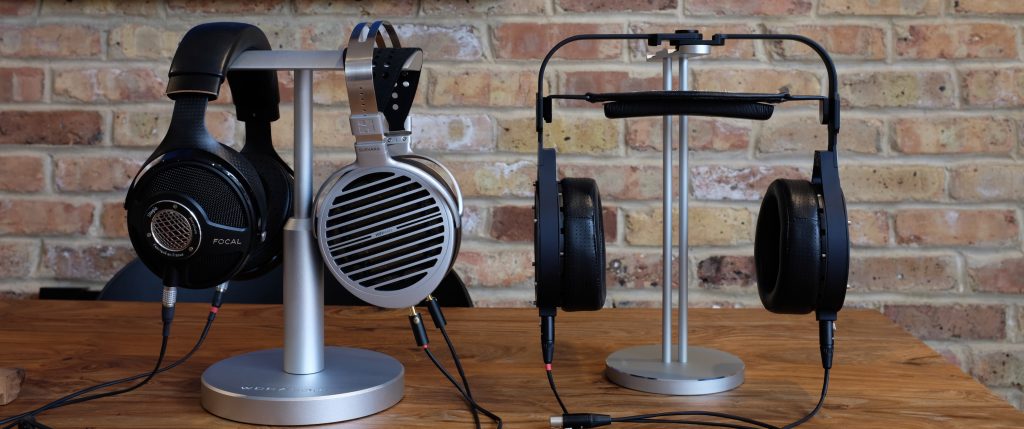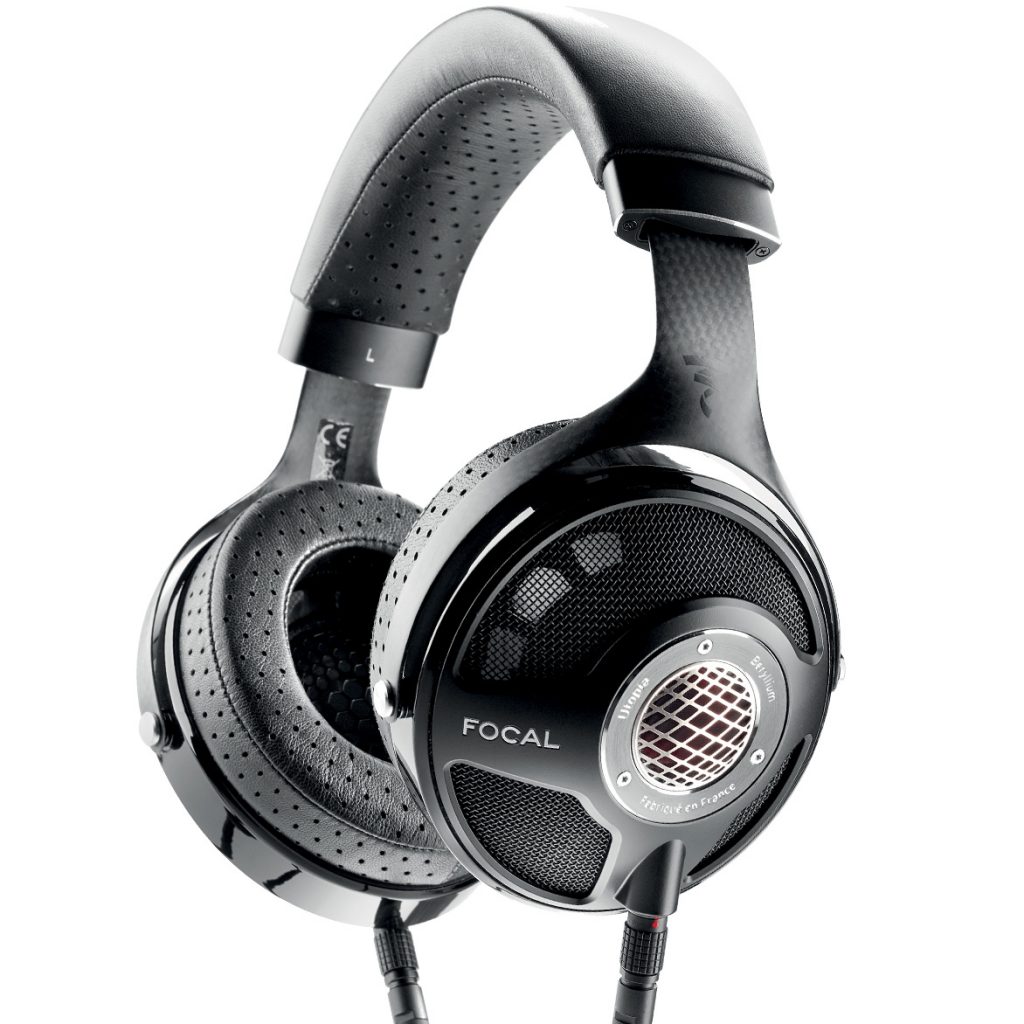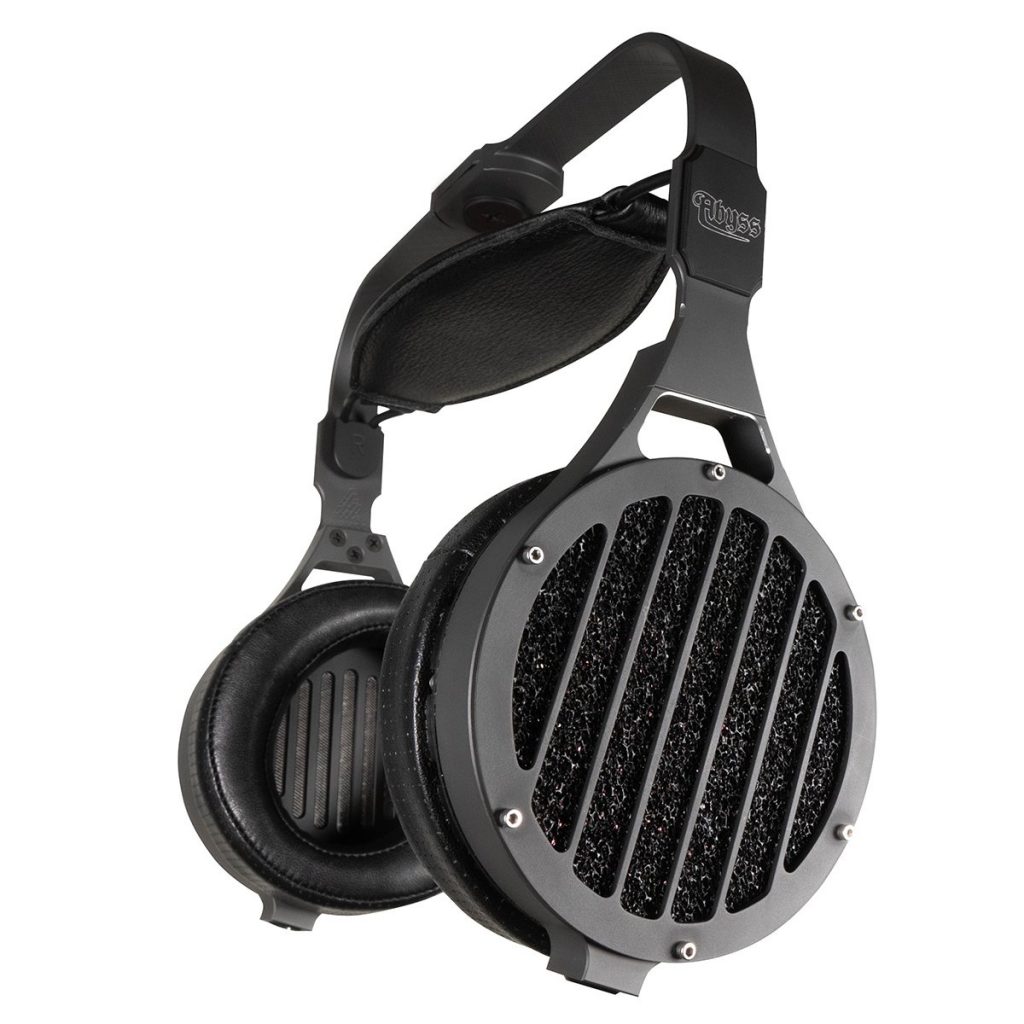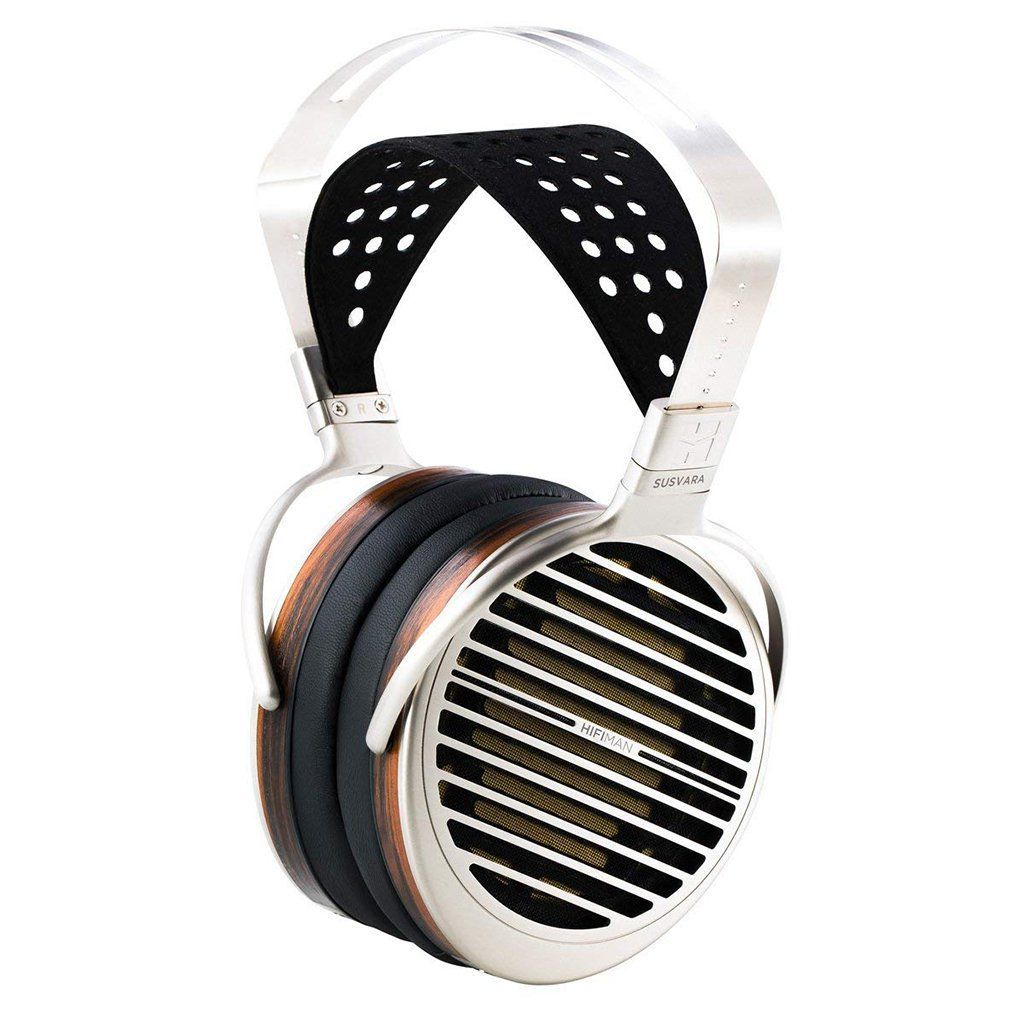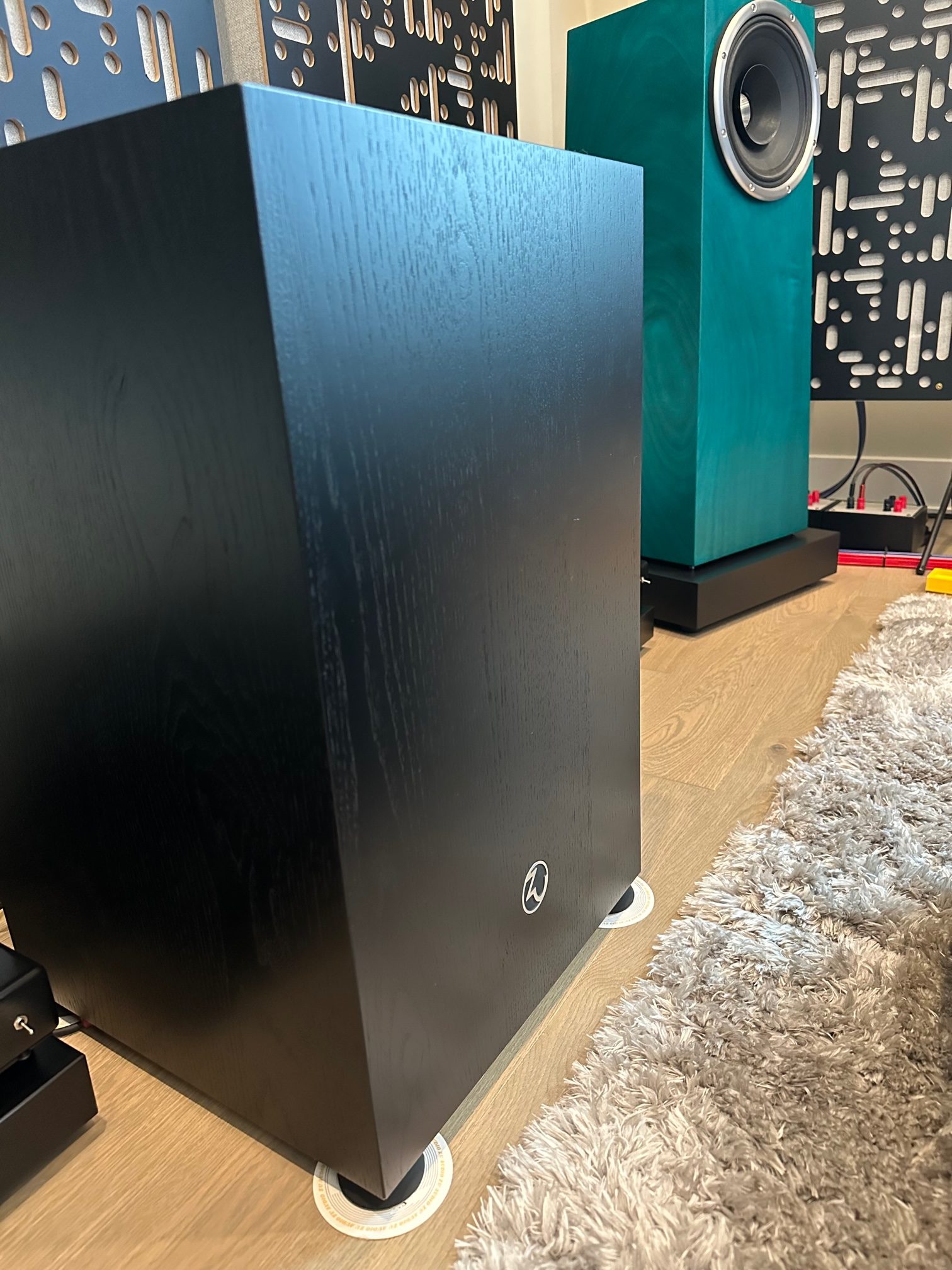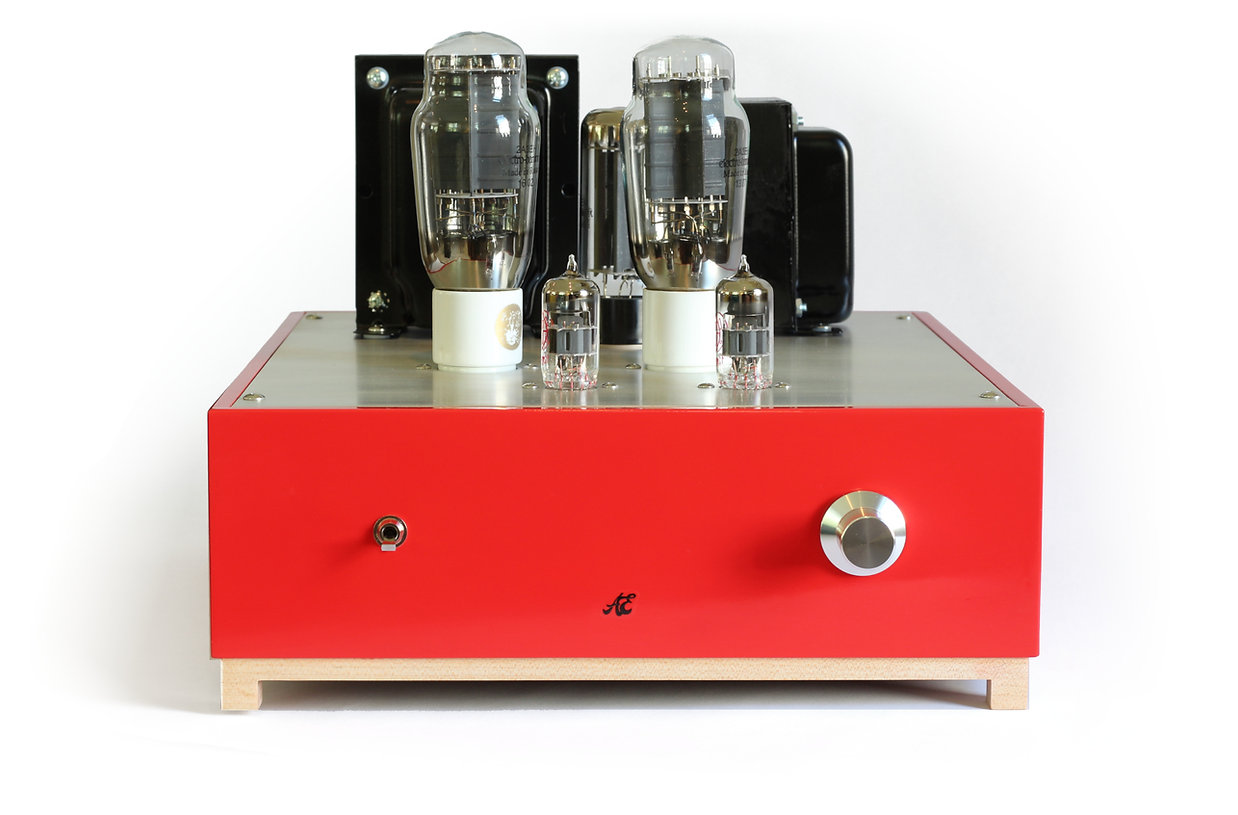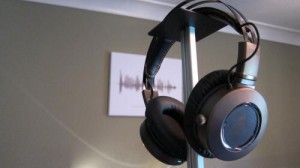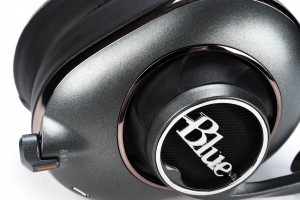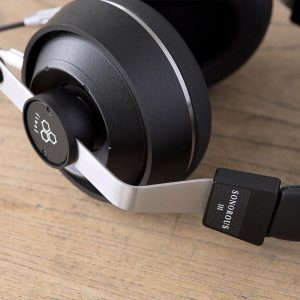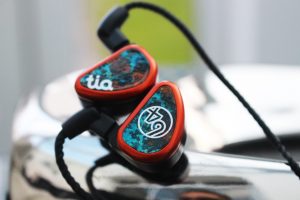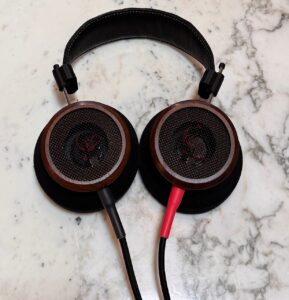I started my audiophile journey in 2011 with the purchase of a Sennheiser HD 600 and a Yulong D100 headphone AMP/DAC combo. The total cost for that system was $400 all in. My feelings on the purchase were mixed to say the least, I loved the performance, but the cost also seemed silly to both me and my college roommates at the time. Little did I know that eight years later, the HD 600 and D100 would still be running, and they would also have a new home on my friend's desk. The biggest surprise for my college self would be the lengths that I would go to assemble my ultimate headphone setup.
From left to right, Focal Utopia, Hifiman Susvara, and the Abyss 1266 Phi CC
Like many audiophiles, I relied on reviews for everything from the headphones to the DACs, amplifiers, and other accessories, to figure out what to purchase when it was time for an upgrade. Slowly things began to fall into place. Like many in the hobby, equipment cycled in and out of my system at a regular pace for quite some time. Recently though, I have finally found the right selection of headphones to keep me content for the foreseeable future. I want to tell you about them, why I chose them, and why all three can easily sit side by side in your system. This is not a head to head review, and there is no winner, but simply a comparison of three of the best open back headphones available today: The Focal Utopia, the Abyss Phi CC, and the Hifiman Susvara. My goal is to help you, the reader, decide which one is worth a try in your system.
System Specifications
- Chord DAVE and Chord Hugo M Scaler
- Pro-ject Streambox S2 (Used as a Roon endpoint)
- Ampsandsound Mogwai SE
- Ampsandsound Suolo Monos
- Wireworld Equinox Interconnects
- All three headphones have Wywires Platinum cables as well as C3 Audio's universal cable system
At the start of this article I owned both the Utopia and the Abyss Phi CC. I requested and received a Hifiman Susvara to evaluate as it was one of the few end game headphones I had not listened to, and I thought it would be worth including. I am happy to say that after spending the last month with the Susvara, it will not be leaving my home, but more on that later.
Focal Utopia: Detailed, Engulfing, Relentless
The Focal Utopia is the most normal looking headphone of the bunch
The Focal Utopia was honestly my first real end game headphone. It was also the first headphone that I listened to and was not able to identify any immediate drawbacks. For those who have not held a Focal Utopia, I highly suggest going out and picking one up. They are very well built and look stunning. The ear pads are supple, and I was able to adjust them to fit my head quite well. I have a smaller head, and at times I have issues getting headphones to fit properly, this was not the case with the Utopias.
If asked to describe the general characteristics of the Utopia, I would describe it as detailed, but still very musical. The sound stage is small, and I would call it an in-head experience instead of an out-of-head experience, but it is precise, and at times disturbing. The concentrated small stage of the Utopia can make it sound relentless depending on the volume and music you listen too. This is a characteristic that I both enjoy and despise. Simply put, if you are tired the Utopia will not be for you, but if you are awake and rested, they are awesome. The Utopia is neutral, but does lean towards being "bright" and can be very fatiguing with the wrong downstream equipment driving them. Luckily at 80ohms and 104dB SPL at 1mW you have plenty of amps to choose from. Pretty much any decent headphone amp will have no issue driving these.
Do not let the efficiency fool you though, the Utopias scale with a quality amplifier. The key is that the amp does not need to put out multiple watts. This makes it a great candidate for a single ended tube amplifier and well-designed solid state amplifiers.
Listening to the Utopia from my Suolo Monos (340mW per channel into a 32ohm load), the Utopia has it all, great bass, lovely tone, and a smooth and articulate treble. In comparison, when I first purchased the Utopia, my main amp was a Schiit Mjolnir 2, which is an excellent amp. However, the result with the Utopia was a hot treble that was hard to listen to after an hour or two. Likewise, because the Mjonir 2 could put out 8 watts into a 32ohm load (5 watts into a 50 ohm load) I found myself unable to get any play with the volume control on the amp.
All of this being said, the Utopia was so good, that I dropped the Mjolnir 2 in favor of the Ampsandsound Mogwai SE. It is almost just as powerful (5 watts into 32ohms with a 5AR4) but this change took away the harsh treble and brought forward an amazing midrange. However, the Mogwai SE introduced me to a new problem. With the 5AR4, the noise floor of the amp was audible with no music playing on the Focal Utopia. This brings me to the biggest drawback of the Utopia for me, the 104dB efficiency. It is both a blessing and curse. A blessing because a quality amp is easier to find than a quality and powerful amp, a curse because some amps are just going to be far too noisy. In the case of the Mogwai SE, the solution is simply to replace the 5AR4 with a 5u4g, but an easy solution will not exist for all amps.
In my setup, I use the Utopia with both the Chord DAVE's built in headphone AMP and the Suolo Monos, depending on my mood. If I want a holographic image and massive detail retrieval, I plug them into the DAVE. If I want a more romantic and fun experience I plug them into the Suolo Monos.
So who is the Utopia for? People who love detail and speed. The Utopia is blazing fast, like electro-stat fast. The Utopia is not for people who love deep bass, nor for people who have noisier amps or touchy volume control. I personally do not see the Utopia leaving my system anytime soon.
Abyss Phi CC: Built Like a Tank, Sounds Like a Pair of Miniature Speakers
The Abyss will ensure you do not win any fashion contests, however they are much lighter then they appear, and when a proper fit is achieved they seem to float on your head
The Abyss Phi CC were an impulse purchase. I had never heard these headphones prior to purchasing them. I purchased them used, on the recommendation of a friend. Of the three headphones in this article, the Abyss take the cake for build materials and overall quality. The Abyss are machined out of a metal frame with a ceramic paint coating. The drivers can be pivoted, and the frame can be expanded and contracted to make it fit your head. The ear pad system is probably the best I have seen and the easiest to use as far as changing pads go.
There is just one problem with the Abyss 1266 Phi CC, and that problem is fit. Getting a proper fit is either impossible or an exact science. In my case it was nearly impossible. I would like to remind the reader about my small head. Without modifying the headband on the Abyss 1266 Phi, it is actually not possible for me to get a proper fit as the vertical distance from the top of my head to my ears is about an inch too shallow. This means the top of the ear pads naturally falls in the center of my ear instead of above my ear. While it is possible to adjust the width and angle of the drivers, their design does not allow for adjusting the vertical placement of the drivers.
Darn-it, small head loses again. My solution to this problem was to place a pad in between the headband and my head. While this did not impact comfort, it was annoying to have to find a workaround for a headphone that retails for $5000 just to get it to fit properly.
With the head pad giving me an extra inch of headroom getting a good fit was within reach. However, I always spend a few seconds fiddling with the fit whenever I put the headphones on. Once on, they are comfortable and stay in place as long as you are not moving too much. If you are a head bobber, try these on before you buy them, as in my experience they will move.
When driven properly, the Abyss rewards you with an incredible speaker like presentation and deep bass that you can feel. Likewise, the sound stage is quite large, and unlike most headphones I have listened to, the sound was truly out of head. I found vocals on the Abyss an odd combination of addicting and unrealistic. There is something about the tone, while I love the sound of vocals from the Abyss, I find that they sound fake, almost too realistic, similar adjusting a TVs sharpness setting. It may make the image look more detailed, but at some point it becomes unrealistic. This characteristic is muted when using aftermarket cables like the Wywires Platinum cable, but they also remove some of the magic addicting qualities that the stock cable provides.
Speaking of the stock cable, I believe that the Abyss 1266 Phi CC likely ships with the best stock cable of the bunch. While the aesthetics could use some work, I honestly never heard the Abyss 1266 Phi CC sound better than when using the stock cable. In my system I need a 15ft cable which forced me to look at after-market alternatives. I found the cost of a 15 ft stock cable too much for me to justify. The Wywires Platinum cable worked the best, though a close runner up was the Moon Audio Silver Dragon cable. The only thing that was frustrating was I never felt like I could get the right combinations of attributes during cable swaps. The stock cable had an addicting vocal presentation, but tended to be peaky at times. The Wywires and Moon Audio cables retained much of the characteristics of the stock cable, removed the peaky nature, but lost the addicting vocal qualities.
At 88dB/mW and 47ohms, the Abyss 1266 Phi CC is not the easiest headphone to drive. I was able to drive them to satisfying levels with all of my amps and the Chord DAVE's built in headphone jack. I found they did sound best when driven with more powerful amplifiers, but difference in power output was observed in sound stage. Big power, bigger sound stage, lower power output, smaller stage.
So who are the Abyss 1266 Phi CC for? They are the perfect headphone if you are looking to emulate speakers and want the deep bass that only big woofers can provide. You should also have an amp with decent power, as they benefit enough from higher power. These are not for you if you want a more traditional form factor, or you are not willing to spend a few seconds ensuring they right fit. Likewise, if you like to dance as you listen to your headphones I would not suggest the Abyss 1266 Phi CC. Finally, make sure to try them on before you buy them and make sure they fit. I do believe that if they fit my head correctly I would likely have a different perspective on these headphones.
It is also important to note that the newest model of these headphones is the TC. The TC is supposed to have better resolution, be smoother, and tame the slightly peaky nature of the treble thanks to its new driver.
Hifiman Susvara: Power Hungry and a Pure Joy
Other then the headband, the Susvara is small compared to the other two headphones and is very light
As I said at the start of this piece, the Susvara was the only headphone of the three that I did not already own. As I was thinking about writing this article, I realized that not including what is considered to be one of the best headphones ever made would leave the comparison lacking. After reaching out to Hifiman, they were nice enough to provide me a review sample which I have had since the beginning of September.
The Hifiman Susvara has both pros and cons in terms of build quality. With a $6000 retail price I think I expect nicer materials, and there are minor imperfections in the finish. But to be honest none of that matters much because they are incredibly comfortable. The Susvara is easily the most comfortable high end headphone I have ever worn. I forget it is on my head after long listening sessions, my ears don't sweat, and no hot spots ever develop on my head. This is due to their light weight, and their pad design. While I would have loved to see more metal, or even carbon fiber used in their construction, and nicer leather for the head strap, it is likely any of these changes may have altered the weight of the headphone which is the last thing I would want to change.
The one thing that I do not like about the Susvara is its use of 2.5mm connectors. While I have had no issues with them, I am just at a loss why Hifiman decided on 2.5mm instead of 3.5mm. This is especially confusing considering the headphone loves power; who wants to shove 15 watts through a 2.5mm connector? I sure don't.
My rant about the 2.5mm connectors aside, let's talk about power needs. These headphones are extremely inefficient at 60ohms and 83db/mW and want power. Now that is not to say that they won't play on amps like the Ampsandsound Suolo Monos and the Chord DAVE's headphone output, but they will not sound their best. While the Utopia and Abyss 1266 Phi CC get use across all of my amps, the Susvara really only is listened to out of the Mogwai SE. This is because it can provide 5 watts of power into a 32ohm load. With the Mogwai SE driving the Susvara, I do not find the headphones wanting for power, and I have nice extension both on top and on the bottom.
So how does the Susvara sound? To my ears, the Susvara is a departure from any of the headphones in my collection. When I heard them for the first time, I simply said "wow." The first and only other time I was this impressed was when I put on my HD 600s for the first time, way back when I got started in this hobby. To attempt to qualify my reaction, the overall sound of the Susvara is coherent and believable, highs extend smoothly, but are not peaky, the mid-range is clear and clean, and the slightly warm tone that my amp imparts comes through very nicely. Finally, the bass is deep and rich with a ton of detail. Is the bass at the Abyss 1266 level? Not quite, but it is more detailed, and the quantity is extremely close. The sound stage of the Susvara is expansive, it is not a speaker experience like the Abyss, but I would say it is similar to near field monitors, and presents slightly out of head.
For me the Susvara represents nearly every quality I like from all of my favorite headphones, without any of the drawbacks. It has bass similar in quantity of the Abyss 1266 CC, but it has the quality of the Utopia. Similarly, the Susvara has a midrange that reminds me of a combination of an LCD 3 and a Utopia. Detailed, smooth, fun, and real. When it comes to sound stage, the Susvara is similar to the Abyss providing that elusive out of head experience. However the Susvara sets itself apart from all other headphones I have listened to when it comes to the treble. I am sensitive to treble, but I love the detail it provides. The perfect treble needs to walk a fine line; it must be detailed, but never peaky or harsh. The Susvara walks that line with ease in a way that I have never heard a headphone achieve. The treble imparts fine detail while being extended and is not fatiguing to my ears. I still am shocked at times. This does have one drawback, these are the first headphones I have owned that I have to watch my volume dial. I can easily turn these up louder than they should be for the safety of my hearing.
So who are the Susvara for? Someone who already has a statement system; if you have not spent at least $6000 on the headphone AMP and DAC that sit in front of the Susvara, I would question if the system will show the Susvara at its best. Now that is not to say you should not get the Susvara, I just question if you may be skipping a few steps first. The Susvara is also for someone who already has an excellent amp, either a low powered speaker amp or a high power headphone amp. In my case the Mogwai SE is both a speaker amp and a headphone amp, but do not try to power these with lower power headphone amps, you will likely be disappointed. Finally, the Susvara is also for someone who wants the speed of an electrostatic headphone without buying all the specialized electrostatic equipment and likes the body that traditional headphones provide. Who should avoid the Susvara? In my opinion the only reason not to buy these headphone, besides their steep cost, is if you don't have the right amp to power them. Simply put, if you can afford these, and you can mentally align yourself to the cost/value ratio that these headphones have, buy them. I wish I found them earlier in my search. I bought the review sample and have no regrets about it.
Concluding Thoughts
My goal was to try and provide perspective around three of the top rated end game headphones on the market today. You cannot go wrong with any of the headphones in this article, but some will be better for your needs than others. You may also find that you have a use for all three. The one thing that I learned in the process of writing this piece is even after eight years, there are still headphones out there that cause me to go "wow." Oh also that most end game headphones are not fashion statements.
Focal Utopia
Retail: $3999
Focal
Abyss Phi CC
Retail: $5000
Abyss
Hifiman Susvara
Retail: $6000
Hifiman
http://store.hifiman.com/index.php/




